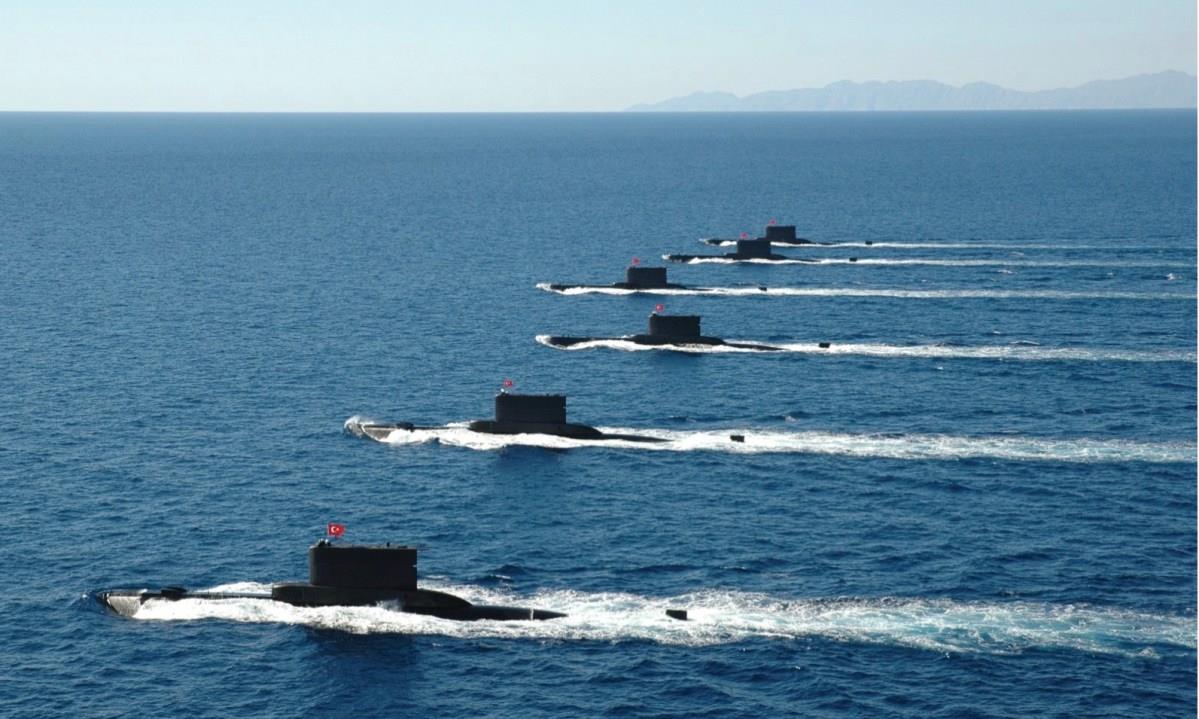
Turkey's killer mini subs designed for global export
Turkey is developing mini attack submarines to operate in its surrounding seas and for potential sale on global weapons markets, a weapon at least one expert quoted in media reports sees as a possible“game-changer” for the future of naval combat.
Despite being smaller and with less range than larger vessels, mini subs are extremely effective in littoral operations because they present smaller magnetic and acoustic signatures, which can be further masked by background noise such as shipping traffic.
Upon starting production this year, the STM500 mini sub will be the smallest boat built by Turkey. It has a submerged displacement of 540 tons, length of 42 meters and a maximum beam of 8.5 meters. It has a planned maximum speed of 18 knots, cruise speed of 5 knots, and can dive up to 250 meters.
The mini subs will have a range of 3,500 nautical miles running on its diesel engines, and 75 nautical miles when fueled by batteries. The class can be fitted with an optional air-independent propulsion (AIP) system, which when combined with diesel propulsion can extend the boats' range to 4,000 nautical miles.
They can be fitted with various types of sonar, such as cylindrical array and a cylindrical transducer array, as well as passive ranging, passive intercept array and own-noise array systems. The mini subs can also be equipped with an optronic periscope and electronic warfare support measures (ESM) antenna.
The type is designed to accommodate 18 crewmembers and a six-member special forces team, stay submerged for 30 days and carry 4 torpedo tubes, with an armament of eight heavyweight torpedoes or cruise missiles.
Currently, Turkey operates 12 Type 209-derived boats and is in the process of building more modern Reis class subs, derived from the Type 214 class. The Reis boats are AIP-equipped with hydrogen fuel cells, which increases considerably their submerged capabilities.
Turkey's mini sub program will be useful for counterbalancing Russia in the Black Sea and as a tool for pursuing its wider great power ambitions.

Currently, Turkey is the only NATO member that is able to legally deploy subs in the Black Sea. Article 12 of the Montreux Convention prohibits non-Black Sea powers from deploying subs in the region.
In this connection, Russia's Black Sea Fleet has a sizeable number of warships with six Kilo class subs. Turkey is thus the only NATO member that can check Russia's naval force projection from the Black Sea into the Mediterranean Sea.
The mini subs will also potentially be inviting for countries that wish to adhere to NATO standards but lack the budget to purchase pricier US or Western-made equipment, such as the Philippines and Ukraine.
While the Philippines has long relied on the US as its traditional military supplier, the high costs of US equipment, Vietnam War hand-me-downs and possible restrictions on the sale of military equipment due to human rights violations have forced it to rely on alternative suppliers of NATO-standard equipment, such as South Korea, Israel and Turkey.
One proposed submarine concept for the Philippine Navy is the Shallow Water Attack Submarine (SWATS) . This proposed sub is designed to operate in extremely shallow water for coastal defense and can ambush hostile naval forces. That said, Turkey's STM500 mini sub may fulfill the Philippines' capability requirements for such boats.
The Ukrainian Navy lost most of its naval assets during Russia's 2014 annexation of Crimea, with Russia capturing 75% of its active fleet, the majority of its helicopters and the bulk of its ship repair facilities. Russia also captured the Ukrainian Navy's sole submarine, an aging Foxtrot class boat , and reportedly scrapped it in 2019.
In response, Ukraine has revealed a three-stage plan to rebuild its Navy by 2035, with infrastructure being built for small submarines, corvettes and military boats. Previously, Turkey has sold combat drones to Ukraine and has established facilities for joint training, maintenance and manufacturing. Turkey could next offer to sell its ST500 mini sub to Ukraine to counterbalance Russia.

Turkish President Erdogan is pushing his 'neo-Ottoman' ambitions forcefully into the Mediterranean Sea. Image: Facebook
Turkey's great power ambitions are also likely a driving force behind its mini sub program. This stems from President Recep Erdogan's“Neo-Ottoman” foreign and domestic policy, which tracks the expansionist and Islamist practices of the historical Ottoman Empire.
Turkey's“Blue Homeland” concept adds a maritime dimension to its great power ambitions, which requires strong international partnerships for its naval modernization.
In this direction, Turkey has recently upgraded Pakistan's French-built Agosta-90B subs and is building four MILGEM corvettes for Islamabad. In the future, Pakistan may also opt to purchase Turkey's ST500 mini subs, which could set a procurement precedent for fellow regional Islamic countries such as Bangladesh and Indonesia.

Legal Disclaimer:
MENAFN provides the
information “as is” without warranty of any kind. We do not accept
any responsibility or liability for the accuracy, content, images,
videos, licenses, completeness, legality, or reliability of the information
contained in this article. If you have any complaints or copyright
issues related to this article, kindly contact the provider above.






















Comments
No comment